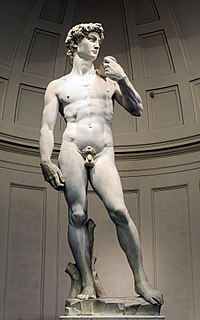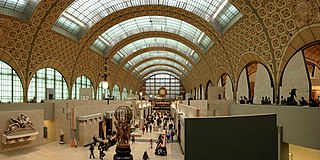
The Musée d'Orsay is a museum in Paris, France, on the Left Bank of the Seine. It is housed in the former Gare d'Orsay, a Beaux-Arts railway station built between 1898 and 1900. The museum holds mainly French art dating from 1848 to 1914, including paintings, sculptures, furniture, and photography. It houses the largest collection of impressionist and post-Impressionist masterpieces in the world, by painters including Monet, Manet, Degas, Renoir, Cézanne, Seurat, Sisley, Gauguin, and Van Gogh. Many of these works were held at the Galerie nationale du Jeu de Paume prior to the museum's opening in 1986. It is one of the largest art museums in Europe. Musée d'Orsay had 3.177 million visitors in 2017.

The Château de Cheverny is located at Cheverny, in the département of Loir-et-Cher in the Loire Valley in France. It is one of the châteaux of the Loire valley
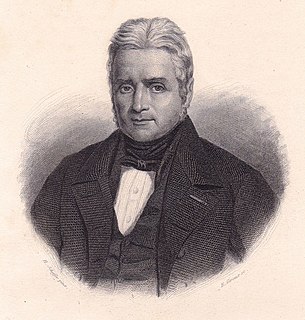
Jacques Laffitte was a leading French banker, governor of the Bank of France (1814–1820) and liberal member of the Chamber of Deputies during the Bourbon Restoration and July Monarchy. He was an important figure in the development of new banking techniques during the early stages of industrialization in France. In politics, he played a decisive role during the Revolution of 1830 that brought Louis-Philippe, the duc d'Orléans, to the throne, replacing the unpopular Bourbon king Charles X. Laffitte was named president of the new Citizen King's Council of Ministers and Minister of Finances. After a brief ministry of 131 days, his "Party of Movement" gave way before the "Party of Order" led by the banker Casimir-Pierre Perier. Laffitte left office discredited politically and financially ruined. He rebounded financially in 1836 with his creation of the Caisse Générale du Commerce et de l'Industrie, a forerunner of French investment banks of the second half of the 19th century such as the Crédit Mobilier (1852). The Caisse Générale did not survive the financial crisis caused by the Revolution of 1848.

Casimir-Pierre Perier was a prominent French banker, mine owner, political leader and statesman. In business, through his bank in Paris and ownership of the Anzin Coal Co. in the Department of Nord, he contributed significantly to the economic development of France in the early stages of industrialization. In politics, he was a leading liberal member of the Chamber of Deputies throughout the Bourbon Restoration and president of the chamber at the outset of the July Revolution of 1830. He led the liberal-conservative Resistance Party in support of the constitutional monarchy of Louis-Philippe I. He became president of the Council of Ministers and Minister of Interior in the spring of 1831. Although his ministry was brief, his strong government succeeded in restoring order at home and keeping peace abroad. He fell victim to the cholera epidemic in France in 1832.

The Bank of France known in French as the Banque de France, headquartered in Paris, is the central bank of France.

François Joseph Charles Simiand was a French sociologist and economist best known as a participant in the Année Sociologique. As a member of the French Historical School of economics, Simiand predicated a rigorous factual and statistical basis for theoretical models and policies. His contribution to French social science was recognized in 1931 when, at the age of 58, he was elected to the faculty of the Collège de France and accepted the chair in labor history.
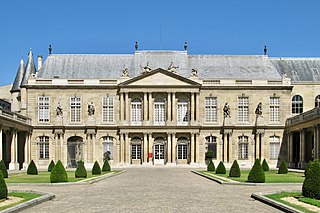
An hôtel particulier is a townhouse of a grand sort, comparable to the British townhouse. Whereas an ordinary maison (house) was built as part of a row, sharing party walls with the houses on either side and directly fronting on a street, an hôtel particulier was often free-standing, and by the 18th century it would always be located entre cour et jardin: between the cour d'honneur and the garden behind. There are hôtels particuliers in many large cities in France.

The Panthéon Bouddhique, also known as the Galeries du Panthéon Bouddhique or the Galerie du Pantheon Bouddhique du Japon et de la Chine, is a museum of Japanese and Chinese art works. It is a wing of the Guimet Museum located within the Hôtel Heidelbach at 19, Avenue d'Iéna in the 16th arrondissement of Paris, France.
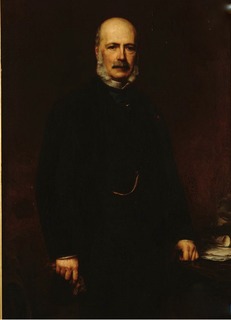
Ernest Goüin was a French civil engineer and industrialist.

Claude-Nicolas Perier was assured an important place in French history when he opened his Château de Vizille near Grenoble to the famous meeting of the estates of the Province of Dauphiné heralding the coming of the French Revolution. He is notable also as the founder of the remarkable Perier family "bourgeois dynasty" that rose to economic and political influence and prominence in France during the 19th century. Claude's descendents became leading Paris bankers, regents of the Bank of France and owner-directors of Anzin, the major coal mining company of France in the Department of Nord. They were mayors of towns, prefects of departments and members of municipal tribunals and chambers of commerce. Many were elected representatives of departments to the Chamber of Deputies in Paris and appointed to France's Chamber of Peers. Most notably, Casimir Pierre Perier (1777-1832), the fourth of Claude's eight sons, became Prime Minister of France in 1831-32 during the Orleanist monarchy of Louis-Philippe I. Claude's grandson, Jean Casimir-Perier (1847-1907), was elected president of the Third Republic in 1894. Claude Perier was sufficiently wealthy before 1789 to be known as "Perier-Milord" in Grenoble and surroundings, but it was mainly during the decade of revolution 1789-99 that he created the financial underpinning of the Perier dynasty. His eight sons and two daughters would share his legacy of 5,800,000 francs.
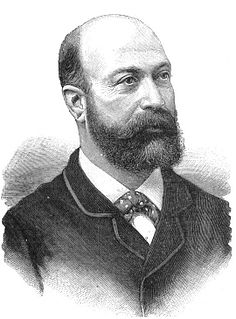
Baron Jacob Adolphe Reinach, known as Jacques de Reinach was a French banker of Jewish German origin, involved in many major financial affairs of the era and finally brought down by the Panama scandals. He was the son of Clementine Oppenheim (1822–1899) and her husband Adolphe de Reinach (1814–1879), Belgian consul in Frankfurt, ennobled in Italy in 1866 and then confirmed as a noble by William I of Germany.

The Gardens of the French Renaissance is a garden style, initially inspired by the Italian Renaissance garden, which evolved later into the grander and more formal Garden à la française during the reign of Louis XIV, by the middle of the 17th century.
Émile Gilioli, was a French sculptor.

The Château-Gaillard is a French hôtel particulier and an archaeological museum, built in the late Middle Ages in Vannes.
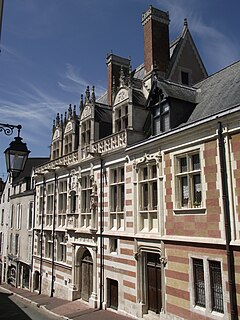
The Hôtel d'Alluye is a hôtel particulier in Blois, Loir-et-Cher, France. Built for Florimond Robertet when he was secretary and notary to Louis XII, the residence bears the name of his barony of Alluyes. On Rue Saint-Honoré near Blois Cathedral and the Château de Blois, it is now significantly smaller than it was originally as the north and west wings were destroyed between the seventeenth and nineteenth centuries.
Félix Albert Anthyme Aubert, born 24 May 1866, died 1940 both in Langrune-Sur-Mer, was a French artist who was part of the decorative arts group Les Cinq with Alexandre Charpentier, Tony Selmersheim, Jean Dampt and Étienne Moreau-Nélaton, which later expanded to become the Art dans Tout movement.

Marc-Olivier Strauss-Kahn is a French central banker and international economist whose career began at the French central bank, Banque de France (BDF), in 1978. He has twice been the Chief Economist of the French central bank. In 2017, Governor of Banque de France François Villeroy de Galhau named him Director General, Governor's Special Advisor.
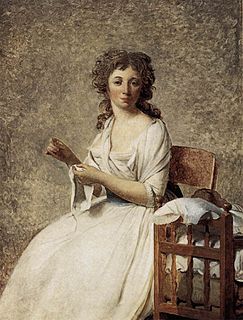
Portrait of Madame Pastoret is a 1791 portrait by Jacques-Louis David. It shows Adélaide Pastoret, née Piscatory de Vaufreland (1765-1843). He was a friend of the Pastoret family but broke with them in 1792 after they became more politically radical. With his portraits of Philippe-Laurent de Joubert and Madame Trudaine, it was one of three paintings left incomplete due to the advance of the French Revolution - all three figures were arrested or emigrated. An infant's head is also shown in the cot - this is Amédée de Pastoret, a future conseiller d'Etat, painted by Ingres in 1826.







